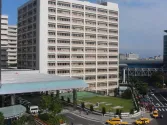
Reinsurers boost capacity, appetite grows 10% to 15%
Non-loss-impacted property catastrophe renewals saw risk-adjusted rate reductions of 5% to 15%.
Guy Carpenter reported that non-loss-impacted property catastrophe renewals saw risk-adjusted rate reductions of 5% to 15% on 1 January.
Pricing outcomes varied depending on region, attachment point, and reinsurer perspectives on price adequacy.
Reinsurance capacity increased significantly, with reinsurer appetite growing by 10% to 15%, compared to an estimated 5% rise in demand.
Factors driving these reductions include projected reinsurer returns on equity of 17.3% for 2024, a 6.9% rise in dedicated reinsurance capital to $607b, disciplined pricing and attachment points, and actions by cedants to improve portfolio profitability.
Reinsurer results were heavily influenced by attachment points, with the industry’s catastrophe losses for 2024 estimated at $130b.
The reinsured share of these losses dropped to 14%, compared to the pre-2023 average of 20%.
This shift has made supplemental purchases, such as frequency protection and retention buydown options, increasingly important for balancing risk and capital management.
Whilst non-loss-impacted layers saw rate reductions, loss-impacted layers experienced increases ranging from flat to 30%, particularly in the US, Europe, and Canada.
Activity in the 144A catastrophe bond market remained strong, with $17b in limits placed across 67 transactions in 2024.
Casualty reinsurance programs faced mixed results.
Proportional casualty structures saw flat to slightly lower ceding commissions, whilst excess liability and umbrella placements encountered pressure on treaty terms.
Cedants responded by providing detailed claims, rates, and exposure data to secure favourable terms.



















 Advertise
Advertise








